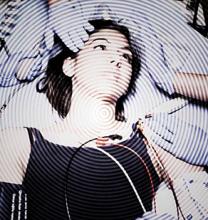It remains unclear if other factors, such as exclusion of a medical mimic, new onset or a change in psychiatric symptoms, admission/reimbursement requirements for inpatient care, and the need for transfer to a freestanding psychiatric hospital, contribute to either the perceived need or true indication for urine drug screening and blood alcohol testing. There are opportunities for quality improvement in institutions with nonselective, “routine” laboratory testing requirements.31,32
Selectively Treat Agitation and Pain
The use of verbal de-escalation techniques and appropriately directed pharmacotherapy for the acutely agitated patient provides immediate safety, establishes the rapport necessary for effective history taking and physical examination cooperation, and should assist with the timely identification of underlying medical conditions. In some patients with underlying neurological and psychiatric conditions, acute pain may be poorly communicated or present only as agitation.33
In lieu of simply writing “medically cleared” on a patient’s chart and arranging an emergency psychiatric assessment, a direct phone call to the mental health provider, a structured transition of care document for the behavioral health team to reference, or a standard discharge summary of the ED workup that includes testing rationale and future management recommendations34 will facilitate continuity of care, prevent redundancy, and improve the overall care of psychiatric patients.
System Collaborations
Building alliances with hospital-based and community mental health providers based upon best practices would intuitively seem to benefit EDs and patients. The lack of established benchmarks of care remains a major impediment to quality assurance and performance improvement efforts in the provision of psychiatric emergency care, including the medical clearance process. Although currently lacking in application, the creation of a common standard for documenting, abstracting, and reporting the nature and management of psychiatric emergencies has been demonstrated.35
Both academic psychiatric emergency centers and the referral patterns of large community hospital systems can be complex, making not only access to care confusing or unnecessarily difficult for psychiatric patients, but also communication difficulties for caregivers. However, unique collaborative opportunities to streamline medical clearance and psychiatric assessment do exist.36 The Alameda Model, for example, provides guidelines—albeit funding challenges—for interdisciplinary triage and treatment processes that ultimately serve patients and decompresses the burden on EDs of caring for patients with psychiatric illness.37
Case Scenarios Continued
Case 1
[The 19-year-old college freshman with poor sleep, loss of appetite, and generalized disinterest in school]
Normal vital signs were noted at presentation and no past medical or psychiatric history was identified. The patient reported that she had drunk a beer at a party earlier that evening, believing that it would “cheer her up.” She expressed feelings of hopeless and stated that she had recurrent thoughts of jumping off her 5-story dormitory building.
The EP performed a physical examination, including a bedside pregnancy test, which was negative. Toxicological testing was not performed because the patient’s cognitive abilities were intact. Emergent psychiatric consultation was arranged.
Case 2
[The 28-year-old man with a history of bipolar disorder who presented with slit wrists]
On examination, the patient was found to be tachycardic and clinically dehydrated. Old records report cocaine abuse and noncompliance with medication and therapy. His agitation was treated with a benzodiazepine, and he was rehydrated with intravenous fluids. Laboratory studies included evaluation of electrolytes, creatinine, blood urea nitrogen, therapeutic drug levels, and a urine toxicological screen. An electrocardiogram (ECG) also was obtained. The patient’s lithium level was found to be significantly elevated, requiring dialysis. His wounds were sutured, and medical admission with an inpatient psychiatric consultation was arranged.
Case 3
[The 52-year-old woman with a medical history of hypertension, emphysema, and schizophrenia]
An ECG showed no evidence of ischemia. The patient’s caretaker brother reported his sister’s behavior seemed usual to him. He further noted that the patient had a past history of bursitis in her left shoulder. The patient denied any chest pain or shortness of breath. No evidence of substance abuse was identified in the medical record.
Further inquiry into the patient’s medical history revealed she had undergone cardiac catheterization for atypical chest pain 6 months prior, the results of which were normal. The patient’s vital signs remained normal. Except for reproducible pain on range of motion of the left shoulder, the physical examination was also normal. She was able to carry on a conversation with the EP about her favorite television shows, and she gave no indication of intent to harm herself or others. Nonsteroidal anti-inflammatory drugs were recommended to alleviate the shoulder pain, and the patient was discharged to her routine outpatient psychiatric follow-up.

